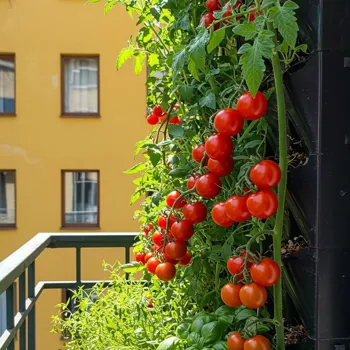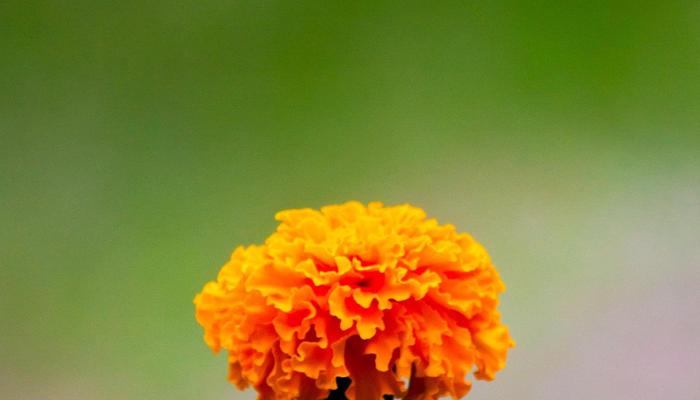Unleash the Flavor: Dive into the World of Home Spice Gardens! Learn how to grow and nurture your own spice haven
In every Indian household, the aroma of freshly ground spices is synonymous with comfort
and flavour. From the fiery kick of chilli to the earthy warmth of turmeric, spices are the very essence of Indian cuisine.
But did you know that you can bring this rich tapestry of flavours directly to your doorstep, by creating your own spice garden at home? Imagine stepping out into your balcony or backyard and plucking fresh curry leaves for sambar, or snipping off a sprig of mint for your evening chai.
It's not just about convenience, it's about connecting with nature, controlling the quality of your ingredients, and adding a touch of magic to your everyday cooking. Starting a spice garden might seem daunting, but with a little planning and care, it can be a surprisingly rewarding experience.
So, grab your gardening gloves and let's embark on this flavorful journey!
Grow a variety of spices at home to suit your local climate and culinary preferences
Whether you have a sprawling garden or a tiny balcony in a bustling city, there's always room for a spice garden. The key is to choose the right spices that suit your local climate, space constraints, and culinary preferences.
Some of the easiest and most popular spices to grow at home in India include curry leaves, ginger, turmeric, chilli peppers, mint, coriander, and lemongrass. Curry leaves are a must-have for South Indian dishes and thrive in warm, sunny conditions.
Ginger and turmeric, with their medicinal properties, can be grown in pots or raised beds. Chilli peppers offer a range of heat levels to suit your taste, while mint and coriander are versatile herbs that can be grown in small containers.
Lemongrass adds a citrusy note to teas and curries, and can be easily propagated from cuttings. Remember to research the specific needs of each spice in terms of sunlight, water, and soil. Grouping spices with similar requirements will make your gardening journey much smoother.
Plan spice garden layout considering sunlight, space, growth habits, drainage
Before you rush to the nursery, take a moment to assess your growing space and plan your layout. Consider the amount of sunlight your garden receives throughout the day. Most spices need at least 6-8 hours of sunlight to thrive, so choose a sunny spot accordingly.

If you're working with limited space, vertical gardening solutions like hanging planters or wall-mounted shelves can be a great option. You can also create a tiered garden using crates or pots of different sizes. Think about the size and growth habit of each spice.
Some, like ginger and turmeric, spread horizontally, while others, like curry leaves, grow into small trees. Plan accordingly to ensure that each spice has enough room to flourish. Finally, don't forget about drainage.
Proper drainage is crucial to prevent waterlogging and root rot, which are common problems for spice plants.
Spice garden success depends on quality soil, amend with organic matter, test pH
The success of your spice garden hinges on the quality of your soil. Most spices prefer well-draining, fertile soil that is rich in organic matter. You can either buy ready-made potting mix or create your own by mixing garden soil with compost, vermicompost, and sand.
Compost and vermicompost provide essential nutrients and improve soil structure, while sand helps with drainage. Avoid using heavy clay soil, as it can retain too much moisture and suffocate the roots. Before planting, amend the soil with a generous amount of organic matter.
Consider adding a layer of mulch around your plants to conserve moisture, suppress weeds, and regulate soil temperature. Mulch can be made from dried leaves, straw, or wood chips. Regularly test your soil pH to ensure it is within the optimal range for your chosen spices.
Water and fertilize spice plants for thriving garden
Watering and fertilizing are essential to keep your spice garden thriving. Water your plants regularly, especially during hot and dry weather. The frequency of watering will depend on the type of spice, the weather conditions, and the type of soil you're using.
In general, water deeply and less frequently, rather than shallowly and often. Avoid overwatering, as this can lead to root rot. Use a watering can or a hose with a gentle spray nozzle to avoid damaging the plants. Fertilize your spice plants every few weeks with a balanced organic fertilizer.
You can use compost tea, liquid seaweed extract, or a commercially available organic fertilizer. Avoid using chemical fertilizers, as they can harm the soil and the plants.
Regularly monitor your plants for signs of nutrient deficiencies, such as yellowing leaves or stunted growth, and adjust your fertilizing schedule accordingly. Remember, healthy plants are more resistant to pests and diseases.
Keep spice garden healthy by monitoring pests, diseases, using natural remedies, and companion planting
Pests and diseases can be a challenge in any garden, but with a little vigilance, you can keep your spice garden healthy and productive. Regularly inspect your plants for signs of pests, such as aphids, mealybugs, or spider mites. If you spot any infestations, take action immediately.
You can try spraying your plants with a solution of neem oil or insecticidal soap. These are natural and effective ways to control pests without harming beneficial insects. Prevent fungal diseases by providing good air circulation and avoiding overwatering.
Remove any diseased leaves or stems to prevent the spread of infection. Consider companion planting by planting herbs like basil or marigolds, which can deter pests. Regularly weeding your garden is also important to prevent pests and diseases from taking hold.
By following these tips, you can enjoy a bountiful harvest of fresh, flavorful spices from your own backyard.
AI Generated Content. Glance/InMobi shall have no liability for the content









